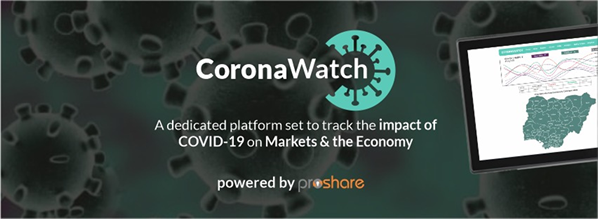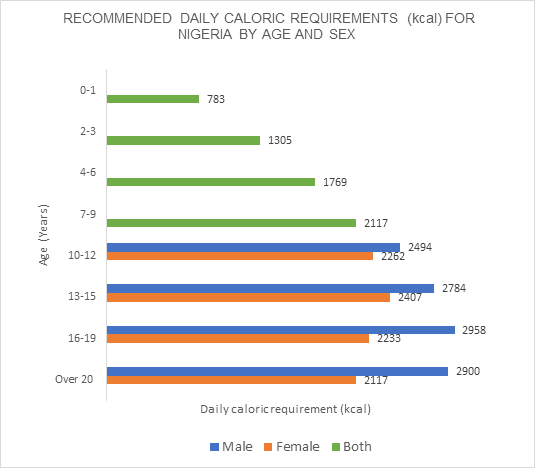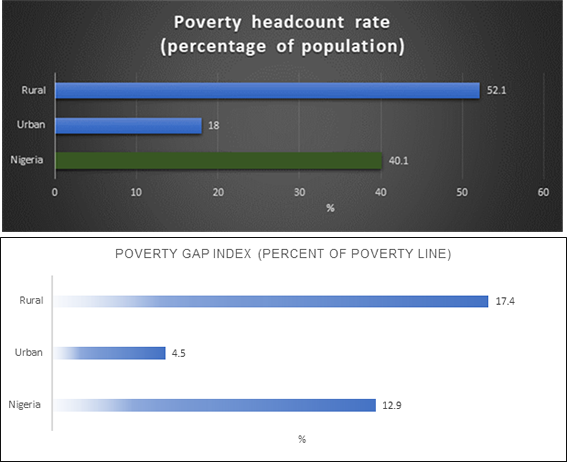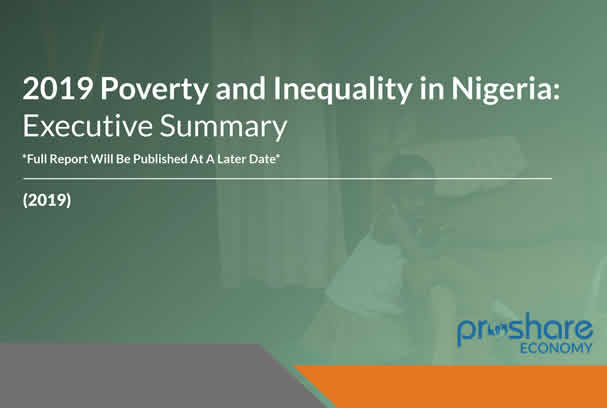Monday, May 04, 2020 09:00AM / NBS/ Header Image Credit: NBS

Executive Summary
- The Nigerian Living Standards Survey (NLSS) is the official survey that is the basis for measuring poverty and living standards. Between September of 2018 and October of 2019, the National Bureau of Statistics (NBS) conducted the latest round of the NLSS after a decade. It is representative at the state level[1] with a sample size of 22,110 households, focusing on increasing the understanding of living conditions of the Nigerian population. The survey collected data on household and individual demographics (age, gender, marital status, among others), access to education, health and basic services, employment, assets, and income. The survey is used to measure prevalence of poverty and to estimate a wide range of socio-economic indicators including benchmarking of the Sustainable Development Goals.
- Several important methodological improvements were implemented in NLSS 2018-19 compared to the last official survey from 2009-10. First, the NLSS was designed and collected using Computer Assisted Personal Interviewing (CAPI) software on tablet devices. This significantly improved quality and speed of data collection and processing. Second, by administering a seven-day recall food consumption module instead of a month-long diary (as done previously), the survey improved accuracy and cost-effectiveness of collecting food expenditures data. In addition, extra effort was made to measuring food quantities where households used non-standard units of measurement that resulted in better quantification of food consumption.
- These improvements in questionnaire design and survey implementation techniques have produced an overall outcome of high-quality data. With the support of the World Bank, the NBS adopted best practice in the collection and processing of household data. As is often the case, making such improvements often comes at the expense of giving up some degree of comparability with past rounds while achieving high standards in survey practice. Recognizing the benefits that come with a better survey infrastructure, a deliberate decision was made to use NLSS 2018-19 as a new and improved baseline for Nigeria's living standards survey system. One key indicator of survey quality is whether households agree to participate in the survey. The NLSS had an impressive response rates of over 95 percent.
Poverty Measurement
- Poverty is measured using consumption expenditures rather than income in Nigeria-similar to the approach taken by many other countries globally. Conceptually, consumption expenditures as opposed to income better reflects the achievement of a particular level of welfare (or "utility") by a household, while income represents the opportunity of reaching a certain level of well-being. Practically, the calculation of consumption expenditures has an advantage of being comparatively easier to tabulate, since household income may come from multiple sources, across different seasons, it can be difficult to remember and track. But more importantly, households rarely report income with an acceptable degree of accuracy, possibly because of concerns of tax implications or privacy.
- The measurement of consumption using NLSS 2018-19 adopts a comprehensive approach to understanding monetary welfare. The "consumption aggregate" is the monetary value of food and non-food goods and services consumed by the household. Thus, the consumption aggregate has the following main components: (i) expenditures on food, from all sources, including from purchased, self-production and gifted, and meals; (ii) schooling and education expenditures; (iii) expenditures related to health care of household members; (iv) housing expenditures; and (v) expenditures on other non-food goods and services, like clothing, small appliances, fuel, recreation, household items and repairs, etc. Once all components are calculated and added up for each household, the ensuing nominal consumption aggregate is adjusted for household size and regional price differences.
- In order to compare household consumption across Nigeria, nominal prices are adjusted. Nominal expenditures are affected by substantial price differences between regions of a country. In addition, there are temporal price differences, whereby prices faced by household at the beginning of the survey might differ from prices at the end of the survey timeline (due to inflation). To ensure the comparability of aggregate consumption across geographical areas and survey months, an adjustment deflator is calculated and applied. The price deflator for NLSS 2018-19 was obtained by constructing a Paasche index of food unit values where the relative prices are weighted by the budget share of the item from the household itself. The Paasche index usually works better when there are significant differences in relative prices faced across regions within a country and if the hypothetical reference household is not representative of the significant parts of the country; it allows the most flexibility of incorporating the regional differences in the prices and budget shares. The adjustment of nominal household consumption expenditure aggregate by household composition and regional deflator results in real per capita total consumption expenditure, which represents individual welfare and thus can be used to rank individuals from the poorest to the richest.
- The identification of the poor and calculation of poverty rates requires establishing a poverty line. The poor are defined as those who subsist below the poverty line, while the non-poor have consumption expenditures higher than the poverty threshold. An "absolute" poverty line is fixed in quantitative terms at a specific welfare level. It represents the minimum amount of consumption below which persons are considered poor. It also allows for measuring changes in poverty over time or across regions can be consistently tracked. The absolute poverty line for Nigeria was previously calculated in 2004 but has become outdated given the structural changes in the survey instrument and household consumption patterns.
Construction ofofficial poverty lines
- The official poverty line should be interpreted as the monetary value of the food and non-food expenditures needed for an individual to achieve a basic level of welfare. This is often referred to as a "cost of basic needs" approach. The poverty line is anchored in the minimum nutritional requirement of individuals and calculated in two steps.
- The first step requires computing the cost of the minimum nutritional basket. This minimum nutritional requirement is expressed in terms of caloric intake derived from Nigeria's caloric allowances table. The table below shows the daily caloric requirements, disaggregated by sex and age groups.
Table1: Daily recommended caloric allowances for Nigeria, by age and sex

Basedon the table of caloric allowances and Nigeria's latest demographic profile,i.e., distribution of population by age and sex, derived directly from NLSS2018-19, the per capita calorie requirement is calculated in two steps. First,the caloric allowances are summed up across all individuals in different ageand sex groups, then that aggregate is divided by the total population. Theaverage per capita calorie allowance was calculated for Nigeria at 2251calories per day, which serves as a nutritional reference value for foodpoverty threshold in 2019.
- Next, to obtain the monetary value of 2251 calories, the food basket of households in the second through the fifth deciles ranked by real per capita consumption expenditures are selected[2] and aggregates of food expenditures and calorie intakes for this group are calculated. Based on the aggregates, the cost per calorie is derived, which is then multiplied by minimum nutritional requirement of 2251 calories. Thus, the food poverty line is estimated at 81,767 Naira per person per year.

- The second step is computing non-food component of the poverty line. The welfare of an individual depends not only on nutritional intake, but also on consumption of non-food goods and services, such as clothing, housing, education and health care. In the second stage, the food poverty line needs to be translated into a threshold that also incorporates the expenditure required to attain basic non-food needs. There are two ways of defining the basic non-food needs, which produce lower and upper bounds of poverty lines.
- The lower bound of the non-food poverty line is defined as the average of non-food expenditures among households whose total expenditures is close to the value of food poverty line. Such households' non-food expenditure should be considered as absolutely necessary for sustaining the minimum living standards, simply because any amount of spending on non-food items for such households necessarily reduces their food expenditure below what is required to attain the minimum calorie requirement.
- The upper bound of the non-food poverty line is defined as the average per-capita non-food expenditure of households whose per capita food expenditure is close to the food poverty line. The rationale for such an "upper bound" is that, the average non-food expenditures among households whose food expenditure is around the food poverty line is applicable to households that no longer need to sacrifice food expenditures necessary to meet the minimum calorie requirement in order to consume nonfood items. Given that even the poor need to spend money on nonfood goods and services to sustain minimum living standards, the upper bound is used in Nigeria to set the non-food allowance.
- The national poverty line is then calculated by adding food poverty line and cost of non-food basic needs. This results in value of poverty line equal to 137,430 Naira per person per year. The implication of this value is as follows: the individuals living in households whose per capita annual consumption expenditures is below 137,430 Naira are considered poor by national standards.
Table 2: Values of food, total lower and upper levels of poverty linesin Nigeria in 2019 (in Naira)
Annual food line | Annual lower line | Annual upper line |
81,767 | 124,948 | 137,430 |
Source: Nigeria Living Standards Survey,2018-19. Note: The estimates exclude Borno state.
Poverty rates
- The national poverty line is based on a welfare aggregate-regionally adjusted per capita consumption expenditures across all households. As such, it is possible to apply the national poverty line to the consumption aggregate to estimate the poverty and inequality indicators across all states. Three indicators are of particular interest and policy use: poverty headcount ratio, poverty gap and Gini index. The headcount ratio defines the proportion of population that is living in the households where the value of per capita total consumption expenditure is below or equal to the poverty line. Poverty gap measures the depth of poverty. In other words, the distinction could be made between those who are just a little below the poverty line and those who are significantly below the line. The poverty gap index measures the extent to which a person falls below the poverty line as a percentage of the poverty line. Gini index is a statistical measure of expenditure distribution in the country. It is widely used as a measure of economic inequality. Gini index ranges from near 0, which would indicate perfect equality and 100 -perfect inequality.
Table3: Poverty and inequality indicators in Nigeria in 2019
| Poverty headcount rate, in percent of population in strata | Poverty gap index, in percent of poverty line | Gini coefficient |
NIGERIA | 40.1 | 12.9 | 35.1 |
Urban | 18.0 | 4.5 | 31.9 |
Rural | 52.1 | 17.4 | 32.8 |
Source: Nigeria LivingStandards Survey, 2018-19. Note: The estimates exclude Bornostate.

- In Nigeria 40.1 percent of total population were classified as poor. In other words, on average 4 out of 10 individuals in Nigeria has real per capita expenditures below 137,430 Naira per year. This translates to over 82.9 million Nigerians who are considered poor by national standards. It is important to note, that this number excludes the state of Borno. While the NLSS 2018-19 includes households from Borno, that sample was not representative of the whole state since only households from "accessible" (safe to visit, areas only) were interviewed. Thus, the Borno sample is considered non-random and non-representative.

| Table 9 Quintiles - Nominal Consumption Aggregate | Table 10 Quintiles - Spatially and Temporally Deflated Consumption Aggregate | |||
| | | Average consumption of …… | | |
| Quintile | Mean | Quintile | Mean | |
| 1 | 65,690 | Fifth 20% | 1 | 70,918 |
| 2 | 108,730 | Fourth 20% | 2 | 115,642 |
| 3 | 154,290 | Third 20% | 3 | 161,735 |
| 4 | 219,195 | Second 20% | 4 | 226,436 |
| 5 | 415,254 | Top 20% | 5 | 422,977 |
- Given that NLSS 2018-19 is not technically comparable to either the NLSS 2003-04 and to HNLSS 2009-10, it is not possible to compare poverty levels between 2003-04, 2009-10 and 2018-19. In order to compare poverty rates across time, the underlying data should be collected in a similar method. The way the data is collected has great effect on the values reported by households. For example, empirical studies find that mean and variation of reported consumption might be higher in surveys that collected data using pen-and-paper interviewing (PAPI)-the way the data was collected in 2003-04 and 2009-10 as compared to CAPI-the mode used in 2018-19. That difference is amplified by modification in the survey instrument, i.e., transition from a month-long diary of measuring food consumption (administered back in 2003-04/2009-10) to 7-day recall (implemented in 2018-19). The innovations of NLSS 2018-19, while introducing accuracy and cost-effectiveness of the survey also rendered the incomparability of data and statistics derived from NLSS 2009-10, including the poverty levels. The 2019 study is accordingly treated as a base study and any comparisons with previous poverty studies should be treated with caution.
Annex
Table4: Poverty and inequality indices by states
| State | Poverty headcount rate, in percent of population in strata | Poverty gap index, in percent of poverty line | Gini coefficient |
| Abia | 30.67 | 7.15 | 24.48 |
| Adamawa | 75.41 | 27.64 | 27.78 |
| Akwa Ibom | 26.82 | 7.25 | 31.78 |
| Anambra | 14.78 | 3.24 | 24.99 |
| Bauchi | 61.53 | 20.50 | 26.51 |
| Bayelsa | 22.61 | 5.25 | 29.69 |
| Benue | 32.90 | 8.43 | 29.43 |
| Borno* | |||
| Cross River | 36.29 | 9.66 | 30.68 |
| Delta | 6.02 | 0.94 | 29.84 |
| Ebonyi | 79.76 | 34.09 | 28.60 |
| Edo | 11.99 | 2.90 | 29.52 |
| Ekiti | 28.04 | 6.16 | 29.70 |
| Enugu | 58.13 | 16.00 | 24.99 |
| Gombe | 62.31 | 20.03 | 31.54 |
| Imo | 28.86 | 6.89 | 27.24 |
| Jigawa | 87.02 | 38.73 | 28.00 |
| Kaduna | 43.48 | 15.51 | 35.19 |
| Kano | 55.08 | 15.24 | 28.64 |
| Katsina | 56.42 | 16.18 | 24.57 |
| Kebbi | 50.17 | 15.14 | 29.55 |
| Kogi | 28.51 | 6.19 | 24.42 |
| Kwara | 20.35 | 4.45 | 25.06 |
| Lagos | 4.50 | 0.67 | 27.23 |
| Nasarawa | 57.30 | 16.87 | 25.57 |
| Niger | 66.11 | 21.68 | 27.59 |
| Ogun | 9.32 | 1.63 | 27.10 |
| Ondo | 12.52 | 2.28 | 25.54 |
| Osun | 8.52 | 1.43 | 25.12 |
| Oyo | 9.83 | 1.85 | 31.09 |
| Plateau | 55.05 | 17.80 | 40.22 |
| Rivers | 23.91 | 5.46 | 29.47 |
| Sokoto | 87.73 | 38.82 | 28.02 |
| Taraba | 87.72 | 42.38 | 32.23 |
| Yobe | 72.34 | 26.48 | 27.31 |
| Zamfara | 73.98 | 24.95 | 23.49 |
| FCT | 38.66 | 9.77 | 32.26 |
Source:Nigeria Living Standards Survey, 2018-19.
Note: * The estimates exclude Borno state.
| Table 5 Poverty Headcount Rate by Household Head's Education Level and Sex | ||||||||||
| State | No education/ less than primary education | Primary education | Secondary education | Post-secondary education | ||||||
| Male | Female | Male | Female | Male | Female | Male | Female | | | |
| NIGERIA | 66.17 | 34.72 | 41.25 | 26.93 | 25.00 | 14.08 | 18.13 | 5.66 | | |
| Urban | 43.14 | 24.66 | 19.16 | 19.35 | 12.97 | 11.20 | 8.86 | 3.42 | | |
| Rural | 70.82 | 39.17 | 50.33 | 32.74 | 35.87 | 18.96 | 31.20 | 10.15 | | |
| | | | | | | | | | | |
| Table 6 Poverty Headcount Rate by Household Head's Income-generating Activity and Sex | ||||||||||
| State | Agriculture only | Nonfarm enterprise only | Wage work only | Diversified | Apprenticeship/ Not working | |||||
| Male | Female | Male | Female | Male | Female | Male | Female | Male | Female | |
| NIGERIA | 58.76 | 37.75 | 25.45 | 19.45 | 17.53 | 13.99 | 46.90 | 31.54 | 34.24 | 24.13 |
| Urban | 30.11 | 27.96 | 15.22 | 18.12 | 11.87 | 11.38 | 23.92 | 24.99 | 18.60 | 11.00 |
| Rural | 63.20 | 39.02 | 41.68 | 22.48 | 28.72 | 21.14 | 53.25 | 33.79 | 47.14 | 34.81 |
| | | | | | | | | | | |
| Table 7 Poverty Headcount Rate by Household Size | | | | | | |||||
| State | 1 person | 2-4 people | 5-9 people | 10-19 people | 20 or more people | | | | | |
| NIGERIA | 2.66 | 17.88 | 40.90 | 67.27 | 77.66 | | | | | |
| Urban | 1.66 | 5.23 | 19.07 | 44.47 | 71.57 | | | | | |
| Rural | 3.61 | 27.52 | 53.18 | 73.79 | 79.60 | | | | | |
| Top category (20 or more people) is too small - just 17 observations for urban areas | | | ||||||||
Click Here to Download 2019Poverty and Inequality in Nigeria PDF Report
Latest2020 NBS Reports
Q2 2020
- GDP By Income and Expenditure Approach Q4 2019 - Household Final Consumption Declined by -2.40%
- Average Price of 1kg of Rice Increased By 21% YoY to N438.66 In March 2020
- Average Transport Fare Paid By Commuters Within City Increased By 1.89% MoM in March 2020
- Average Prices of PMS, AGO, HHK and Cooking Gas - March 2020
- Headline Inflation Increases By 12.26% YoY In March 2020; 0.06% Higher Than February 2020 Rate
- Nigeria's Total Public Debt Stood At N27.40trn in Q4 2019 - NBS
- FAAC Disburses N647.35bn in February 2020 - NBS
Q1 2020
- Banking Sector Records 893.68m Volume of Transaction in Q4 2019 - NBS
- Active Voice Subscription Grew By 3.08% in Q4 2019 - NBS
- All Commodity Group Import Index Fell by 3.27% Due Mainly to Declines in the Prices of Goods
- Average Prices of 1kg of Tomato Decreased By -10.65% YoY to N237.22 in Jan 2020 - NBS
- Average Fare Paid By Commuters For Bus Journey Intercity Increased By 0.91% MoM in February 2020
- Average Prices Of PMS, AGO, HHK and Cooking Gas - February 2020
- Headline Inflation Increases By 12.20% YoY In February 2020; 0.07% Higher Than January 2020 Rate
- FAAC Disburses N716.30bn in January 2020 - NBS
- FAAC Disburses N2.93trn to FG in 2019 - NBS
- Total Value of Capital Imported in Q4 2019 Stood At $3,802.38m - NBS
- FAAC Disburses N650.83bn in December 2019 - NBS
- Nigeria's Merchandise Trade Grew in Q4 2019; Imports Rose Faster Exceeding Falling Exports
- Nigeria's GDP Grew By 2.55% in Real Terms in Q4 2019 and 2.27% in Full Year 2019
- Average Prices of 1kg of Tomato Decreased By -10.65% YoY to N237.22 in Jan 2020 - NBS
- Average Prices Of PMS, AGO, HHK and Cooking Gas - January 2020
- Headline Inflation Increases By 12.13% YoY In January 2020; 0.15% Higher Than December 2019 Rate
- N293.80bn Generated as IGR in Q3 2019 - NBS
- Nigeria's Total Public Debt Stood At N26.14trn in Q3 2019 - NBS
- Average Intercity Fare Increases By 1.43% MoM To N1, 666.57 In December 2019
- Average Price of 1kg of Tomato Decrease YoY by -2.80% To N263.90 In December 2019
- All Commodity Group Index Grew By 2.48% in Q3 2019
- Average Prices Of PMS, AGO, HHK and Cooking Gas - December 2019
- Headline Inflation Increases By 11.98% YoY In December 2019; 0.13% Higher Than November 2019 Rate
 Lagos, NG • GMT +1
Lagos, NG • GMT +1











 4328 views
4328 views









 Sponsored Ad
Sponsored Ad
 Advertise with Us
Advertise with Us









